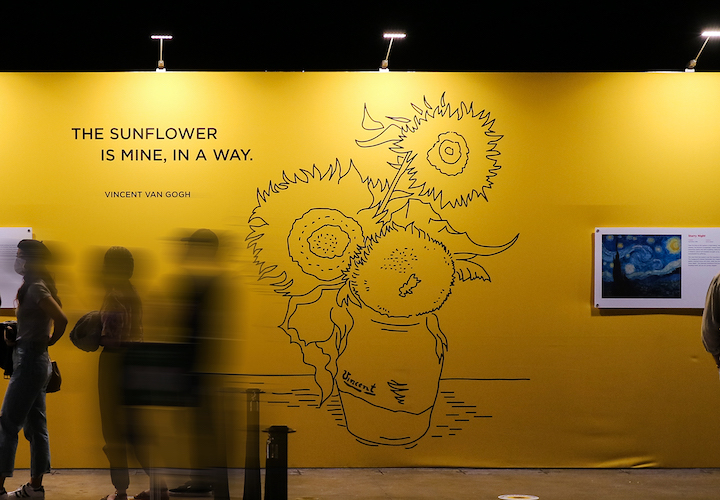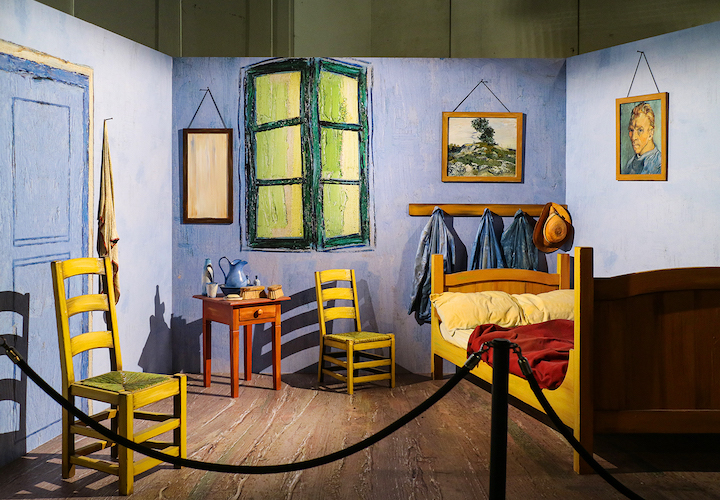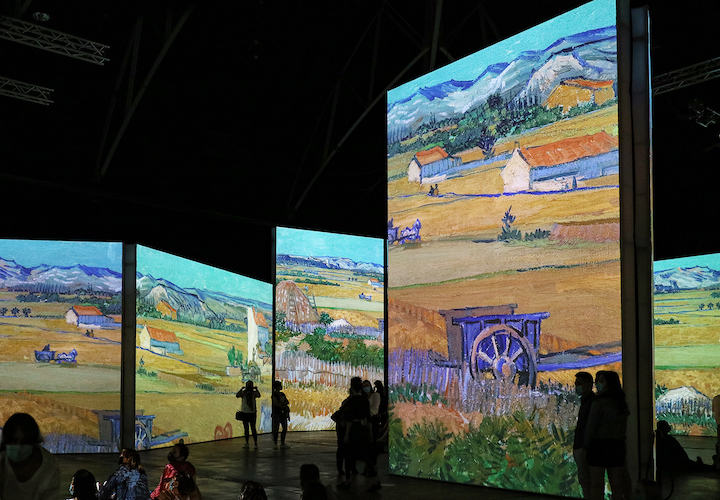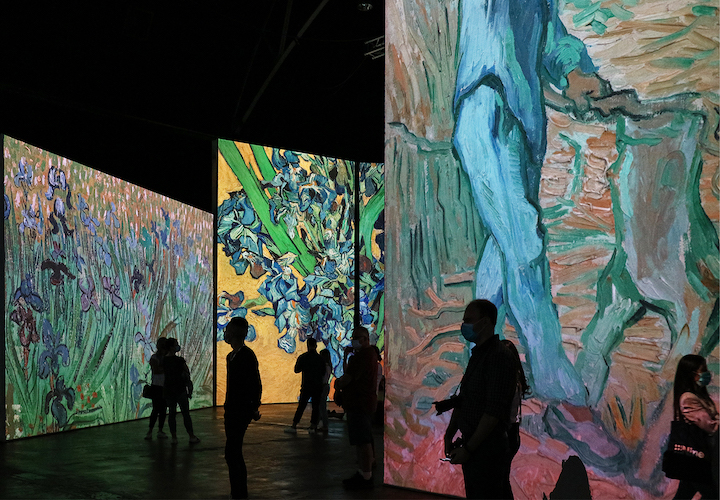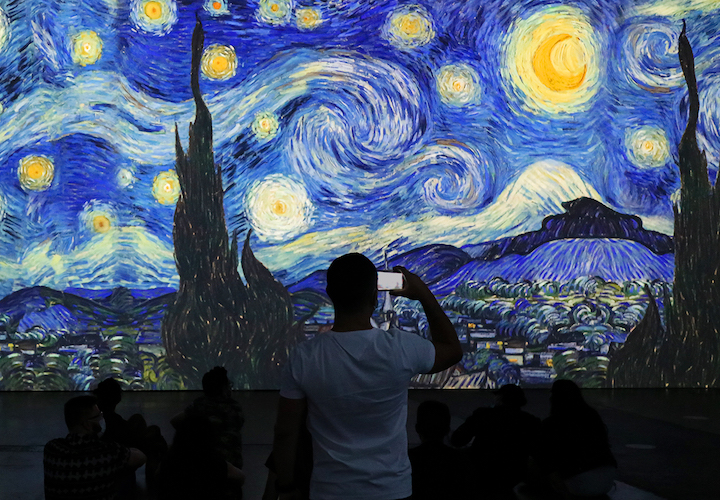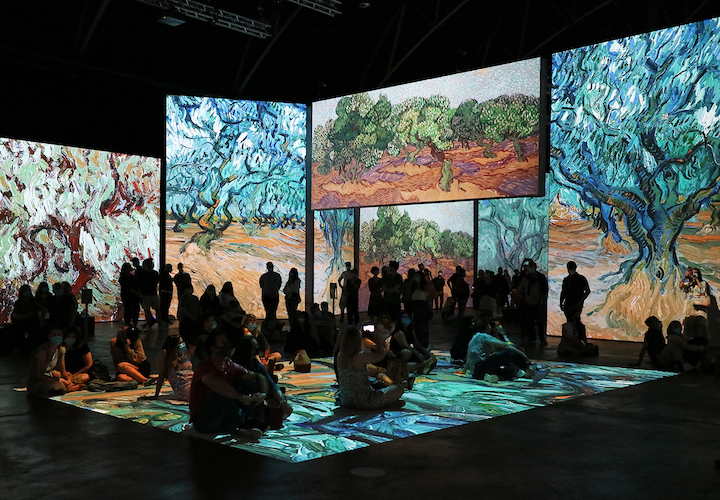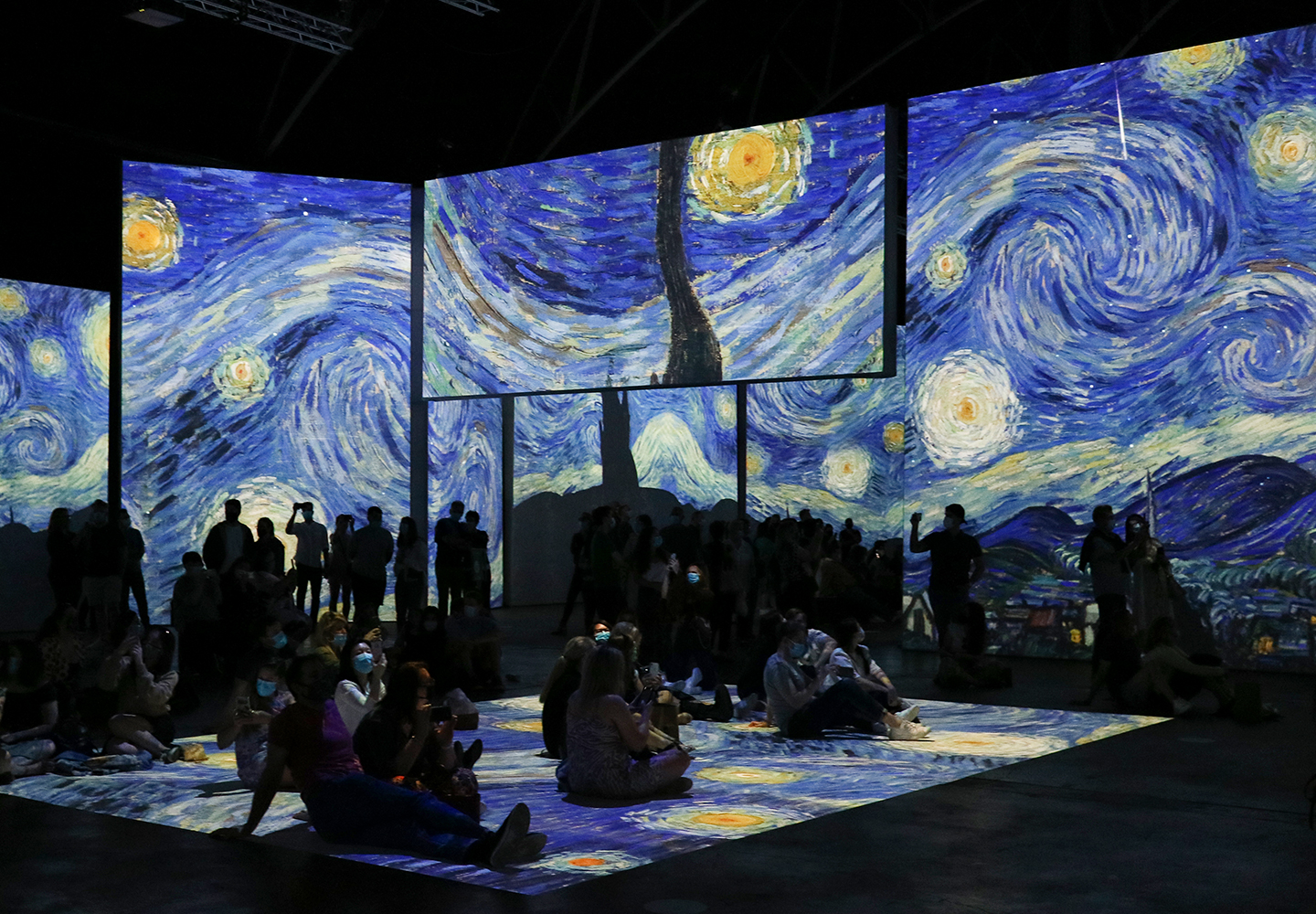Last year, along with thousands of other Sydneysiders, we joined the queues at Van Gogh Alive to experience it for ourselves. Here’s our verdict…
Van Gogh Alive is the world’s most visited multi-sensory art experience, reaching six million people in 50 cities to date. As a studio that specialises in experiential graphic design, we were curious to check it out.
So, last year we ventured out to see Vincent Van Gogh’s artworks come to life on towering screens, which are bathed in vivid colours, swirls and shapes.
“It’s really immersive,” explains Kaoru Kishida, designer at BrandCulture. “There are huge screens changing all the time, synchronised to classical music. It’s quite amazing to sit or lie down surrounded by projections of Starry Night.”
For 45-minutes, the audience is immersed in the chronological story of Van Gogh’s life. Music and light evoke his state of mind while he was painting his most famous works.
“I really liked how the story followed his life as an artist, so you can see what he painted at different stages of his life. It’s also a fun space to be in, and great for kids, although regular gallery-goers might be looking for a more traditional experience.”
The rise of the Experience Economy
The company behind Van Gogh Alive, Grande Exhibitions, is certainly on to something.
There has been a major shift in consumer spending patterns, with millennials and Gen Z seeking out authentic, meaningful experiences. In fact, Euromonitor forecasts that global expenditure on the Experience Economy will reach $8.2 trillion worldwide by 2028.
Grande Exhibitions is leveraging this trend by launching epic, multi-sensory experiences that you can see, hear and even taste (when Van Gogh Alive opens at The LUME in Melbourne, the food and beverage offering will be themed to the experience).
There’s lots happening in this space thanks to advances in screen and projection technology. We’re also keeping an eye on Illuminarium in the United States, which designs entertainment spectacles for an immersive 360-degree environment. It says it hopes to “democratise” extraordinary experiences by bringing the world to you, which is especially enticing in the COVID era as borders remain firmly closed.
The Museum of Ice Cream is another great example of how social media is shaping popular culture: people are looking for sharable, Insta-worthy experiences. This creates huge opportunities for brands who’d like to get in on the action by curating memorable, vivid, sensory experiences.
Van Gogh Alive – coming soon to Melbourne
So is Van Gogh Alive art, entertainment or spectacle – or a mix of the three?
The Guardian laments that the exhibition “robs Van Gogh’s work of all its physical context” and makes it “the stuff of entertainment”.
On the other hand, an ArtsHub review observes: “This has nothing to do with paintings and everything to do with digital entertainment and its capacity to awe.”
When viewed through the latter lens, we have to admit: we loved it. If experiential designers can get a broader cross-section of people interested in art, including kids, that’s okay with us. As for the sheer scale of the experience – it’s worth experiencing in person. With over 3,000 images displayed on soaring 11-metre-tall walls, you’ll enjoy Van Gogh’s talent in hyper-fine detail.
Van Gogh Alive screens at The LUME in Melbourne from 23 September until 22 December 2021. The exhibition has now closed in Sydney. If you’re curious to learn more about experiential graphic design, click here.
